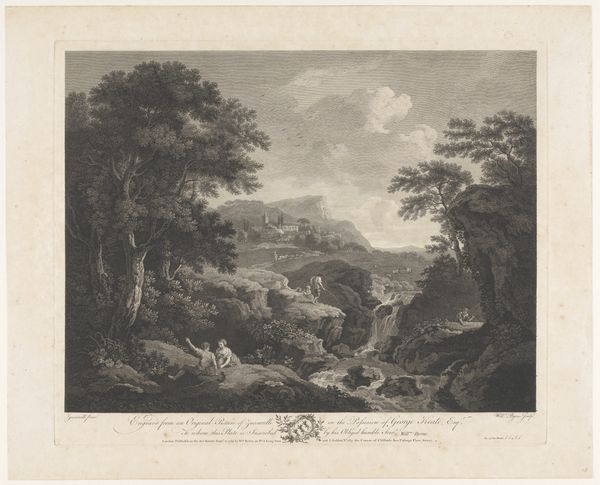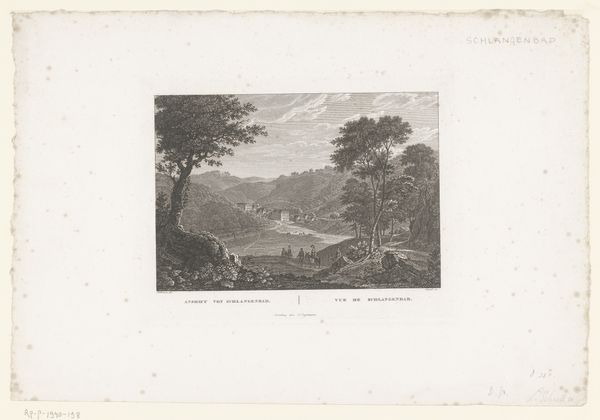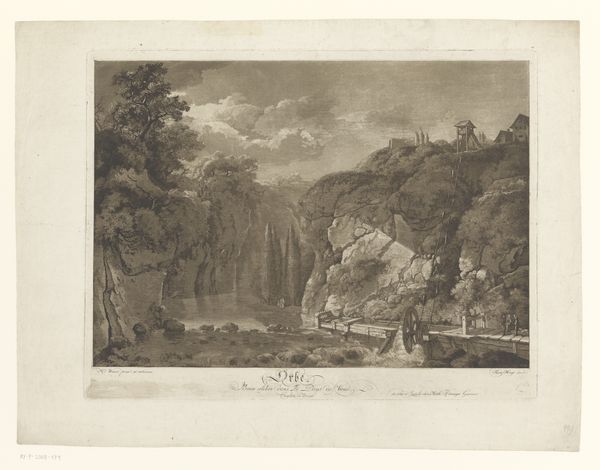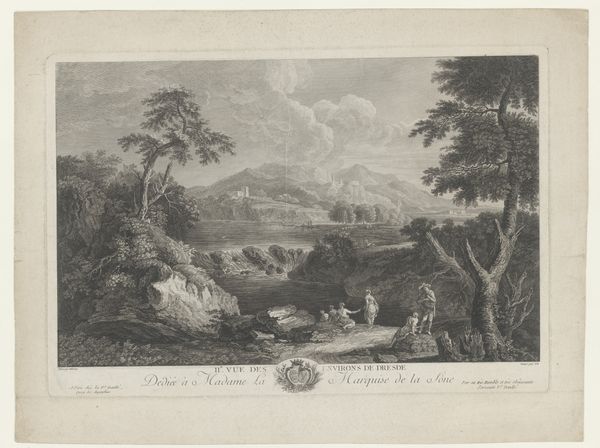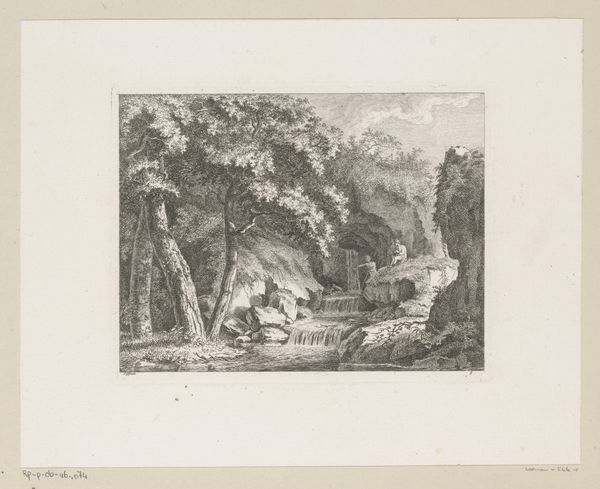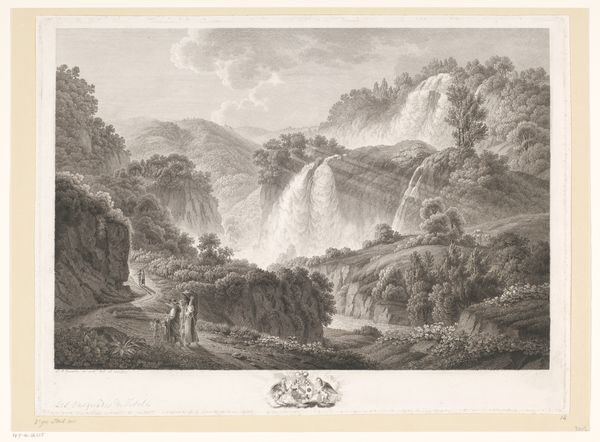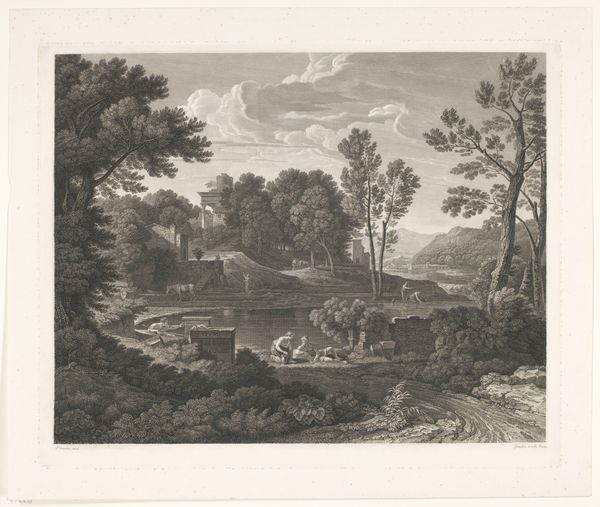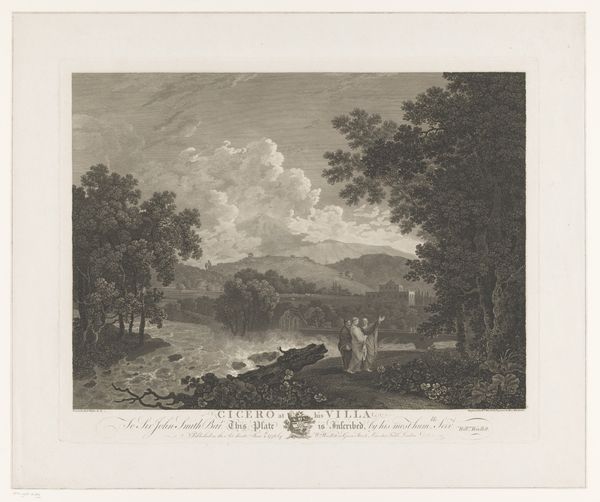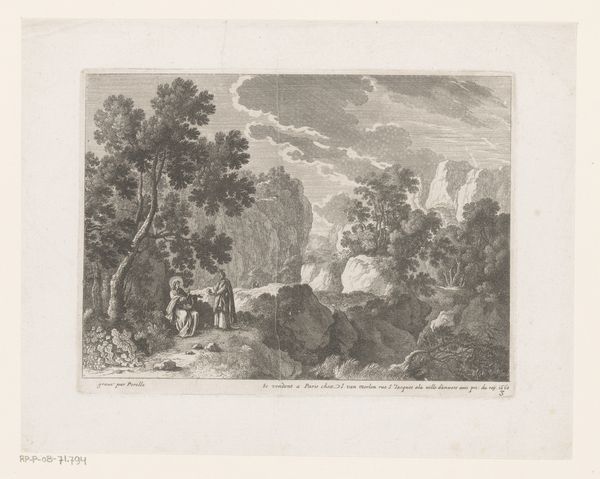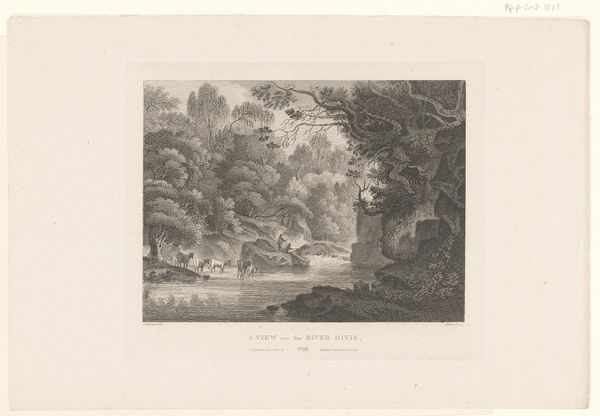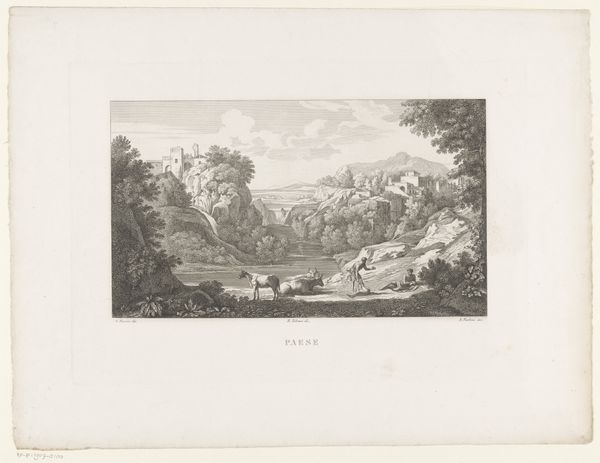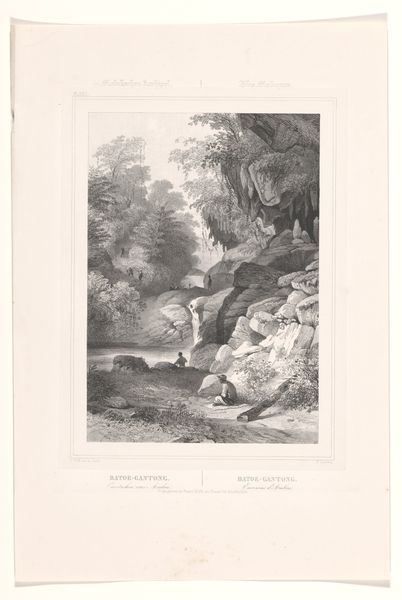
Landschap met rustende figuren en schaapherder bij een rivier 1755 - 1763
0:00
0:00
jeandaulle
Rijksmuseum
engraving
#
old engraving style
#
landscape
#
river
#
engraving
#
rococo
Dimensions: height 323 mm, width 465 mm
Copyright: Rijks Museum: Open Domain
Jean Daullé created this print, "Landschap met rustende figuren en schaapherder bij een rivier," using etching and engraving techniques during the 18th century. The artwork is evocative of the pastoral fantasies popular amongst the French aristocracy of the time. These scenes, seemingly innocent, were complex cultural products; they upheld a vision of an ordered, harmonious world, even as the seeds of social unrest were being sown. Here, figures relax by the river, a shepherd tends his flock, all under the watchful gaze of the fortress perched high above. What does it mean to create an image of leisure and calm when the reality for many was one of struggle? How does the print serve as a form of escapism, offering a temporary retreat from the complexities and injustices of the era? Consider the role of landscape, not just as a backdrop, but as a carefully constructed stage upon which social and political ideals are played out.
Comments
No comments
Be the first to comment and join the conversation on the ultimate creative platform.
